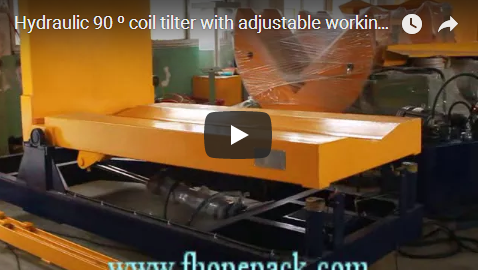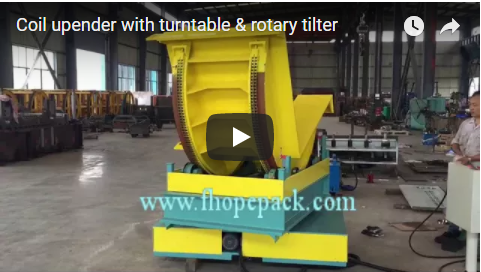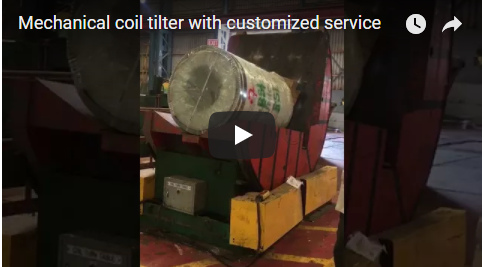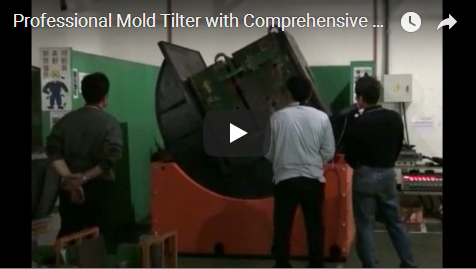Optimizing Heavy Load Handling: The Role of the Steel Sheet Pallet Inverter in Modern Industry
In demanding industrial environments like metal processing, automotive manufacturing, and high-volume warehousing, the efficient and safe handling of heavy materials such as steel sheets is paramount. Traditional methods often involve significant manual labor, posing risks of injury and material damage. The Steel Sheet Pallet Inverter represents a critical piece of material handling technology designed specifically to address these challenges, streamlining operations and enhancing workplace safety.
This specialized equipment is engineered for the primary function of rotating palletized loads of steel sheets through a full 180 degrees. This controlled inversion process allows for rapid pallet exchange—crucial when switching from in-house pallets to shipping pallets, or vice-versa—and facilitates access to the bottom of the stack for quality inspection or removal of damaged sheets without requiring manual de-stacking and re-stacking.
Advanced Engineering for Industrial Demands
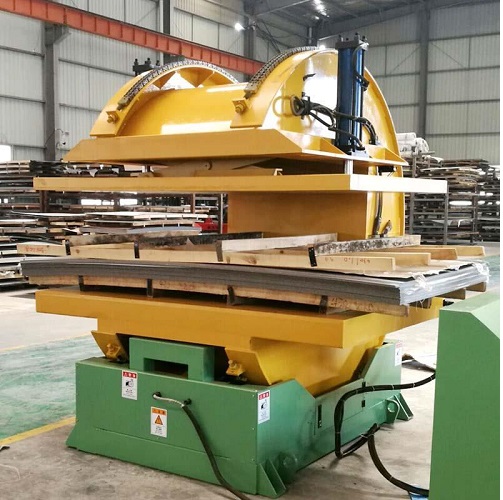
Modern steel sheet pallet inverters, often drawing on principles outlined in material handling patents and refined through continuous engineering research, utilize robust hydraulic or efficient pneumatic systems to execute the inversion cycle. Key design considerations focus on:
- Load Security: Advanced clamping mechanisms, often featuring adjustable pressure controls and sensors, are essential to securely grip loads of varying dimensions and weights (often exceeding several tons) throughout the rotation cycle. This prevents sheet slippage and potential damage. Patented clamping jaw designs focus on distributing pressure evenly across the load surface.
- Structural Integrity: Given the substantial weight of steel sheet stacks, the frame and rotating components are constructed from heavy-duty steel, designed using Finite Element Analysis (FEA) to withstand significant operational stresses and ensure long-term durability.
- Operational Efficiency: Cycle times are optimized for speed, often completing a full 180-degree rotation in under a minute, minimizing bottlenecks in production or logistics workflows. Integration capabilities with automated systems like conveyors or AGVs are increasingly common features noted in industry publications.
Technical Specifications Overview
Note: The parameters listed below provide a general guideline. Specific capabilities may vary based on the model and configuration. Please contact us for precise technical data matching your requirements.
- Machine Type: Heavy-Duty Hydraulic Pallet Inverter
- Primary Application: Steel Sheets, Metal Plates, Heavy Flat Materials
- Typical Load Capacity: Up to 5,000 kg (Higher capacities available)
- Rotation Angle: 180 degrees
- Clamping System: Hydraulically actuated, adjustable pressure side clamps
- Standard Power Requirements: 480V, 60Hz, 3-Phase ( Customizable)
- Approximate Footprint (L x W x H): 3000mm x 2000mm x 2500mm (Varies by model)
- Control Options: Push-button manual control panel, optional PLC automation
- Construction Material: Reinforced heavy-gauge steel frame
- Integrated Safety Features: Emergency stop circuits, perimeter guarding/safety cages, hydraulic pressure relief valves
- Average Cycle Time: Approximately 30-60 seconds
- Operating Environment: Designed for industrial indoor/outdoor use
- Recommended Maintenance: Routine checks bi-annually or per manufacturer cycle recommendations (e.g., 10,000 cycles)
Key Industrial Applications and Benefits
The adoption of steel sheet pallet inverters yields significant advantages across various sectors:
- Metal Fabrication & Processing: In facilities handling raw steel stock, these inverters drastically reduce the time and labor required for pallet exchange or sheet inspection. This translates directly to increased throughput and reduced operational costs. The ability to quickly invert stacks allows for easier access for quality control checks, contributing to higher product quality standards.
- Automotive Manufacturing: The automotive supply chain relies on pristine steel sheets. Pallet inverters enable efficient replacement of transport pallets with production line pallets and allow for the swift removal of any damaged bottom sheets without disturbing the entire stack, preventing compromised materials from entering the production process and minimizing costly line stoppages. Research indicates significant reductions in material handling injuries in plants utilizing such automated equipment.
- Warehousing and Distribution Centers: For logistics operations dealing with heavy metal products, pallet inverters improve storage density and handling efficiency. They facilitate quick transfers between different pallet types (e.g., wood to plastic) required for specific storage systems or customer needs. This optimization streamlines inventory management and accelerates loading/unloading processes, enhancing overall warehouse productivity as highlighted in distribution-focused publications.


